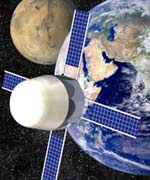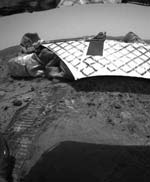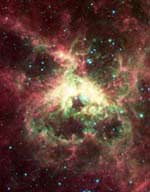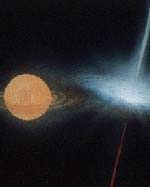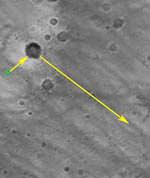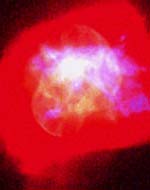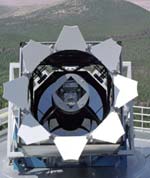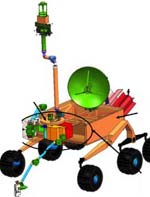
Image credit: NASA
Pathfinder was the size of a shoebox; the Mars Exploration Rovers are as big as golf-carts; but a future Martian rover could be as big as a mini-van. Engineers from Montana State University are helping to design the Mars Scientific Laboratory (MSL), which could make its way to the Red Planet by 2009. Unlike Spirit and Opportunity, which are solar powered, the MSL will have a nuclear reactor, so it will be able to remain operational on the surface for an entire Martian year (two years on Earth), and measure long-term climate changes.
If you think the Mars rovers are interesting, wait until you see a mini-van clambering over the planet’s red rocks and dusty lake beds.
The two golf-cart size rovers that are mesmerizing the country now are preparing the way for a 2009 mission to Mars called the Mars Scientific Laboratory, says William Hiscock, head of the physics department and director of the Montana Space Grant Consortium based at Montana State University-Bozeman. The 2009 mission will involve a rover, too, but that vehicle will be the size of a mini-van.
Lest anyone picture adventurous soccer parents doubling as astronauts, Hiscock said the upcoming rover, like the Spirit and Opportunity rovers, will be remotely controlled. It will be nuclear powered instead of solar powered.
Nuclear power is a good thing, because it means the rover won’t be disabled by dust covering the power source, Hiscock said. The current rovers are expected to run 90 days before they’re done in by conditions like dust or extreme temperature changes.
“Dust builds up on solar panels, decreasing the light getting in. The power fades away because of it,” Hiscock explained.
Roving around Mars is like being 100,000 feet above sea level on Earth, Hiscock added. So when day turns into night, temperatures can drop up to 200 degrees, only to surge again the next day.
“That puts a lot of thermal stress on electronics and wiring,” Hiscock said. “Eventually probably, something just breaks after going through so many cycles.”
The Sojourner rover that landed on Mars in 1997 and still sets on the planet was disabled by dust and extreme temperatures, Hiscock said. It weighed 23 pounds, which means the Spirit and Opportunity are almost big enough to roll over it. The two rovers each weigh about 400 pounds.
Michelle Larson, deputy director of the Montana Space Grant Consortium, said the larger size of the 2009 rover will give it the ability to survive longer than current and past rovers.
“Therefore, science experiments performed on the 2009 rover will be able to make long duration measurements to see how the environment changes in time,” Larson said. “The intent is to have the science instruments on the rover operating for an entire Martian year (which is approximately two Earth years).”
The 2009 mission will investigate the capacity of the Mars environment to sustain life, Larson said. Among other things, the mission will look for organic carbon compounds and features that might have resulted from biological processes. The mission will look at the geology and geochemistry of the landing area, investigate the role of water and other processes that may have been relevant to past living conditions. The mission will look at the effects of cosmic and solar radiation on the Martian surface.
Original Source: Montana State University News Release

